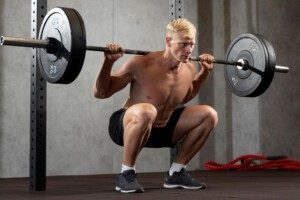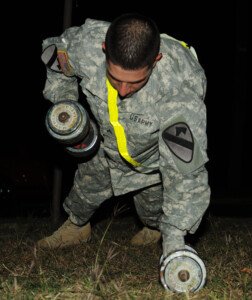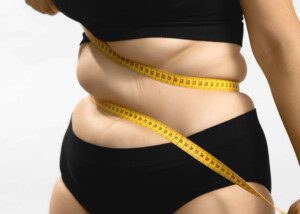
No WONDER the fat won’t come off your stomach; you’re spending too much time working your stabilizer muscles and not the force production ones.
A force production muscle produces force, of course. A stabilizer’s job is to stabilize.
Which action requires more energy: forcing, or stabilizing? This is a “duh” question.
To lose fat in your belly, thighs or all over, you must burn more energy than your body takes in (food).
If you’re spending a lot of exercise time working the stabilizer muscles, you won’t be burning sufficient energy to get rid of the fat in your stomach.

Freepik.com
Which takes more energy: placing your hand on your 50-pound child’s shoulder to prevent him from falling in the wind (stabilizing his weight in space), or raising your 50-pound child over your head (forcefully moving his weight through space)?
Force production muscles are those which can move weight, and the biggest force production muscles include the quadriceps, hamstrings, gluteus maximus, latissimus dorsi, rhomboids and pectoralis major.
With these muscles, you can move some serious weight, relative to what your relatively weak stabilizer muscles can move.
Your “core” muscles are stabilizers; they stabilize the spinal column. Among other duties, they prevent your trunk from collapsing into a forward folded position when you’re standing.
If you’re holding a bowling ball to your chest, these little muscles allow you to stay upright, contracting against the weight of the ball; otherwise, the ball would pull you forward and you’d topple over.
Your body has stabilizer muscles elsewhere too, but the ones in the core are the ones that many people, struggling to lose belly fat, focus on.
All the crunches in the world won’t mobilize the fat depos in your stomach.
If you want to shrink the fat cells in your belly, you must dramatically increase your body’s energy needs—and consume fewer calories than what this amount of energy is.
So instead of spending all that time grinding away at dozens and dozens of crunches, you should recruit your force production muscles via compound movements.
Compound movements employ more than one muscle group; more than one joint.
Examples are: dumbbell row, seated row, lat pull-down, barbell squat, barbell press and the king of compound movements, the deadlift.

Freepik

Freepik.com

Depositphoto.com
Squatting against resistance is another great compound exercise. All pressing motions are compound, too.
To burn lots of fat in your stomach, you can combine movements:
• Dumbbell squat, then stand and press the dumbbells overhead; repeat for reps.
• Renegade row: Hands on dumbbells on the floor, do a pushup; row a dumbbell while in the up position; do another pushup; row the other dumbbell, etc.

• Walking plate lunge: Lunge, holding weight plate at chest level, come up; press plate overhead; lunge the other leg, etc.
To lose the fat in your stomach, do far less work with your stabilizer muscles and far more work with your force production muscles. There’s just no way around it.
 Lorra Garrick is a former personal trainer certified through the American Council on Exercise. At Bally Total Fitness she trained women and men of all ages for fat loss, muscle building, fitness and improved health.
Lorra Garrick is a former personal trainer certified through the American Council on Exercise. At Bally Total Fitness she trained women and men of all ages for fat loss, muscle building, fitness and improved health.
.

























